The fantastic Everest Base Camp trek is a Himalayan journey filled with incredible adventure. This spectacular trek requires proper preparation and packing. Your packing list determines the comfortability and success of your trip to a great extent.
You will pass through the beautiful terrains of the region ranging from 1380m to 5550m in altitude. Therefore, you should pack a wide range of clothes for all weather and climatic conditions. Another essential aspect is to pack clothes in layers so that you can add or remove them as the weather demands.
The Everest Base Camp trek packing list should include clothing, footwear, headgear, sleeping gear, trekking gear, toiletries, and others. First aid kits are also essential, along with medications. Moreover, other items like cameras, and important documents, should also remain included in your list.
If the luggage gets quite heavy, you can hire porters to help you trek without any hassle. The travel season is also an integral factor in deciding what to pack. The packing list should be light in the peak seasons of Spring and Autumn. Similarly, in the off-seasons of winter and summer-monsoon, you should pack extra protection gears and equipment.
Moreover, the quality of the gear is also essential. Deciding what to include in your packing list is confusing, especially for amateur trekkers. It can be pretty daunting, even if you have trekked in the region. You can also rent most of the trekking gear and equipment reasonably from shops around Kathmandu.
Hence, we have listed a comprehensive guide to help you with the list of things to pack for the trek. Read further to learn more about the Everest Base Camp Trek Packing List and detailed information.
Clothing
Everest Base Camp trek is an incredibly challenging trek in the foothills of the Himalayas. The high-altitude trek reaches a very high altitude of 5644m in Kalapathar and 5364m in Everest Base Camp. The perfect clothing to wear while trekking is an integral part of the trekking journey. The clothing materials, including wool and cotton, are generally considered ideal for trekking.
These materials are ideal as they provide comfortable wear during the long trekking journey. Trekkers must also ensure that the clothing materials must absorb moisture and sweat. You will travel through a range of altitudes from Kathmandu to Lukla, Namche, and finally to Everest Base Camp.
Therefore, you must carry clothes in layers as layering your clothes is essential during the trek. This way, you can add or remove clothes based on the temperatures and weather conditions. The season of the tour is also necessary to consider for packing clothes. If you trek in the winter season, you will need to pack extra-warm clothes and extra gear.
Inner Base Layers
The inner base layers are an integral part of your clothing gear. They keep you warm in the high-altitude region, where unpredictable weather conditions can drop below zero degrees. They keep temperatures steady under all conditions, regardless of the outside temperatures. You will get proper insulation during the challenging and taxing trekking journey.
The perfect material for these base layers is either Capilene or Merino Wool, synthetic, or bamboo fibers. However, cotton should get avoided as this material takes away heat from the body and takes a long time to dry. Subsequently, you will feel too cold and uncomfortable after a demanding and taxing trekking journey.
When you are sweaty from a demanding and taxing trekking journey, the air pockets become saturated and take away the body heat. Female trekkers should get quick-drying sports bras with breathable materials to absorb sweat. You should get a quick two each pair of base layer shirts and full pants.
Insulation Layer
The insulation layer is another essential part of your clothing gear in the Everest Base Camp Trek Packing List. This second layer should generally be of fleece. Lightweight fleece jackets and trousers make you feel comfortable as they are breathable. You can take short or full convertible layers for the trekking journey.
Outer Layer
The outer layer is essential to protect you from external elements and cold conditions. Since it is breathable and waterproof, the Gore-Tex material is ideal as an outer layer. Jackets and trousers are perfect as outer layers.
The upper layer gear should include light synthetic wear that is easily washable and dry quickly. You can also carry long-sleeved shirts as the direct sun rays in the Himalayan region are pretty harsh and can cause sunburns. Short-sleeved shirts are ideal for trekking in overcast conditions.
You can carry around two pairs of convertible hiking trousers and 5-6 pairs of long and short sleeves trekking shirts. Five pairs of undergarments and two sports bras (for female travelers) are ideal for carrying for the trek.
List of clothing:
- Fleece jacket
- Convertible Hiking trousers
- Underwear briefs
- Sports bras (for female travelers)
- Light thermal vests
- Waterproof pants
- Waterproof jackets
- Short/long-sleeved shirts
- Lightweight thermals
- Fleece or wool trousers
Foot Wears
Merino wool socks: These socks have quick-drying properties and are odor resistant. They are durable and provide you with comfort during the trekking journey.
Gaiters: Gaiters, also known as shoe covers, provide perfect protection in the off-season of winters and summer-monsoon. They will keep your footwear dry and protect them from other external factors in dusty and rugged terrains.
Flip flops/Slippers: These are nice and comfortable to wear after the taxing trekking journey. It is pretty comforting to take off your trekking boots after a long, arduous trekking journey.
Hiking Boots: The hiking boots with ankle support is a must in the high-altitude Everest Base Camp trek. These boots must get broken in before you start on the trekking journey. They will provide you with safe and comfortable trekking in rugged terrains.
The trekking journey takes you through forested trails, riverbanks, rocky terrains, steep stony landscapes, glacial paths, and others. Therefore, you must ensure that the shoes are light, waterproof, and provide protection from deep cuts.
Thermal Socks: Thermal socks provide warmth and protection from external elements. You must also ensure that the socks are breathable and lightweight. They will protect you from blisters during the rough trekking journey.
Head Wears
Sun hat: The sun’s rays get reflected in the Himalayas and can get quite harsh in the Himalayan region, leading to sunburns. Therefore, sun protection or fleece hats are essential for the trekking journey. Lightweight, waterproof hats that cover your head and neck and give you shade from the sun are a must.
Woolen hat or Beanies: These help you to remain warm in the cold weather conditions, in the higher elevations.
Sunglasses: Sunglasses will allow you to trek easily in the daytime at the Himalayan foothills. The shades provide comfort to your eyes on the sunny days on the Everest Base Camp trek.
Bandana/scarfs: Bandanas or scarfs can get used to cover your head, mouth, and nose on dusty terrains. They will keep you safe from harsh winds and cold weather conditions.
Headlamp: The trek section from Gorakshep to Kalapathar starts early in the morning before sunrise. Hence, to trek in the dark, you will need a headlamp. This is to ensure that you have a safe and comfortable trekking adventure. Besides, this allows you to trek and explore after sunsets in the Himalayan region.
List of Head wears:
- Wool or fleece hat
- UV protected Sunglasses
- Sun protection hats
- Bandana or headscarf
- Prescription sunglasses
- Headlamp with extra batteries and bulbs
Hand Wears
Gloves help you tackle extreme cold weather conditions in the high-altitude region. Some of the challenges of the high-altitude area include frostbite and cold-related injuries.
Since hands remain in the open, they are most vulnerable to these injuries. Therefore, you should get a nice pair of gloves. These gloves provide you warmth and then keep you away from the cold. Another factor that these gloves will give you protection from is water and wind.
Wool, mittens, fleece, and poly-liners are premium high-quality materials for gloves. You can also wear two gloves, including a lightweight inner glove and an outer glove for warmth and waterproofing. The outer glove remains durable against all rugged terrains during the trek. However, climbing gloves are not essential unless you climb Mera or Island peak.
Sleeping Gears
Sleeping Bags: Sleeping Bags are essential for the Everest Base Camp trek. They will provide a warm sleep in the freezing conditions of the Everest region. The teahouses in the area do not have any central heating systems.
Although you will get blankets in these teahouses, they are not enough for the cold nights at an altitude above 4000m. Therefore these blankets with an insulated hood provide a good night’s sleep. However, you must make sure that the sleeping bags get rated at a minimum -10°C, if not more.
Liner: Liners provide you with added warmth. You can use them with your sleeping bags for a warm sleep.
Ear Plugs: These are useful for those trekkers who are light in terms of sleeping, and even the most negligible noise disturbs them. Since you will be staying in the teahouse with many trekkers, the earplugs are incredibly beneficial. They provide soundproofing against all conditions. If you share a room with fellow trekkers, it will also block out snores and other noises.
Bags
Duffel Bag: These duffel bags are essential as they can hold a large amount and have a capacity of around 70L-90L. These bags are durable and provide lock protection and resistance against all kinds of weather. These duffel bags allow you to hold all your luggage, which you can hand over to porters.
Backpack: A proper backpack that is sturdy and durable is a must on the trek. They are ideal if you trek solo. A 50 to 65L pack is perfect for the Everest Base Camp trek. They come with easily accessible pockets for water bottles and other items like documents, snacks, cash, etc.
Daypack: Daypacks are another essential during the trek. These essentials include a water bottle, snacks, and other personal items you need during your day trek.
Raincover: Raincovers provide you with the cover against rain as they have proper waterproofing. You can use this rain cover in duffle bags or backpacks. They will also protect you from dust, wind, snow, etc.
Zip locks: These small plastic bags are ideal for keeping your electronic items like cameras, phones, batteries, etc. they will keep the water and moisture away from them. Hence, the tightly locked zip locks without air passages protect the electronic gadgets from damage.
Trekking Gears and Equipment
Trekking Poles: Trekking poles will help you trek in rugged and remote regions. Different steep and challenging terrains in the Everest Base Camp region require the help of a trekking pole. A trekking pole will help you immensely in traversing through these difficult terrains.
These trekking poles must be lightweight and convertible. They will reduce the stress on your joints and knees. They are also ideal for a perfect balance in the uphill and downhill terrains. Although not compulsory, these trekking poles will act as immense support for a long and taxing trekking journey.
Ultra Violet (UV) rays protection sunglasses: The high-altitude Himalayan region has harsh sun rays and more powerful UV rays. The snow-clad Himalayan mountains also reflect the bright sun, making it difficult for you to trek in the daytime.
Hence, UV protection sunglasses are essential for this high-altitude EBC trek. The reflected rays are also harmful, so you should get high-quality glasses and wear them at all times during the trek.
Water Bottle/Hydration Bladder: There are reusable water bottles that you can take for the trek. They are environmentally friendly compared to plastic bottled water. You can also get a hydration bladder for easy access to water with a sipper. Since you have water at your disposal, you will remain hydrated and clear of acute mountain sickness.
Lock and safety whistle: The Everest Base Camp Trek is a popular, crowded trek in the region. Hence, keeping your valuable items safe under a lock is a good idea. There have been some instances of theft in the base camp area, so it is better if you remain safe. A safety whistle can also help you alert and keep you safe from any such issues on the Everest Base Camp trail.
Toiletries
Towel: Towels that are lightweight and have quick-drying properties are essential for the Everest Base Camp trek.
Pee Funnel: You will be traveling in remote terrains at a high altitude. Hence, toilet facilities are not readily available during the trial. Therefore, carrying a pee funnel for emergencies is a great option.
Sunscreen: Sunscreens are ideal as they protect your skin from damage in the high-altitude Everest Base Camp trek.
Wet Wipes: You can carry wet wipes for sanitization purposes in the region. There is scarce boiling water in the high-altitude area. Therefore, you should get wet wipes to clean yourself as hot showers are not readily available.
Hand Sanitizers: Hand sanitizers are easy disinfectants where water resources are not readily available. Hence, it would help if you carried hand sanitizers in the Everest region.
Toilet paper: You will not find toiletries in most of the Everest Base Camp trail teahouses. Hence, you should carry two rolls of toilet paper for the Everest Base Camp trek.
Sanitary napkins/tampons: Female hygiene products like sanitary napkins, tampons, etc., are also essential to carry along the trail. There are no facilities to purchase these items along the route.
Toothpaste, toothbrush, soap, shampoo, conditioner, etc., are essential for the trek. Moreover, you can also carry other optional items like nail clippers, shaving creams, razors, and other personal grooming products. In the long-duration Everest Base Camp trek, you will need these things.
Medications
Water purification tablets: The water resources in the region might not be safe for drinking water. Hence, you can use these water purification tablets in the area to purify tap water and make it safe for drinking. You can also get iodine tablets, water purification gels, chlorine solutions, etc.
First Aid Kit: If you trek with a trekking agency, you will get first aid facilities. However, it is ideal for carrying your first aid kits as well.
Diamox Tablets: Diamox tablets are anti-nausea tablets that help you tackle altitude sickness symptoms.
Recommended prescription medications: You can also carry recommended medicines if you take any on the Everest Base Camp trail. You can also carry Paracetamol, Neosporin, Imodium, cold medicines, etc.
Blister plasters: Blister plasters are essential for the trek as they keep you safe from cuts, blisters, and other minor wounds.
Oximeter: An oximeter gives you readings on the oxygen saturation in your body and also measures your heart rate. This way, you can control the effects of altitude sickness in your body and tackle altitude sickness.
Spare eyeglasses/contact lenses: There are high chances of eyeglasses/lenses getting lost on the trails. Therefore carrying a spare is essential for the trek.
Important Documents
Visa: You can get an On Arrival Visa at the Tribhuvan International Airport. Indian citizens do not require a visa to travel around the country.
Immunization: You can get the recommended vaccines for the trip and carry the documents with you.
Passport: You should carry your original passport with at least 60 days of validity and a few copies during travel. You can also get SIM cards, trekking permits, and other documents.
Money: The trekkers will need to carry enough money in cash during the Everest Base Camp trek. There are no ATM stations on the high-altitude trails. The teahouses and hotels in the region do not accept cards. So, as soon as you land at the Tribhuvan International airport, you will need to exchange cash for local currencies.
Insurance: Travel insurance is essential for the trek as it can provide coverage against various aspects. These include injuries, altitude sickness, accidents, loss, theft, damage, flight cancellation, rescue operation, emergency evacuation, etc.
Trek Permits: The trekking permits for the Everest Base Camp Trek include the Pasang Lhamu Rural Area Permit and Sagarmatha National Park Entry Permit.
Miscellaneous Items
Camera: Camera is essential for the trek to capture the beautiful terrains in the Himalayan region. Trekkers can take fantastic pictures on this Everest Base Camp journey.
Portable Chargers and Power Banks: Portable chargers are essential for the trek. Power Banks will help you to charge your devices in remote terrains where electricity is scarce.
Books/Kindle: Books or a Kindle will help you remain entertained after your trekking journey. Trekkers will need something to pass their time in the region; therefore, these items are ideal for the trek.
Cards/Board games: Trekkers can also carry cards and board games in the region. They can socialize with fellow trekkers and spend time in the teahouses after the trekking adventure.
Journal and pen: Trekkers can also carry journals to write about their Everest Base Camp journey.
Overall, the serene Everest Base Camp trek is a stunning once-in-a-lifetime trekking adventure. A packing list is an integral part of the journey. We hope you learned about all the items required for the Everest Base Camp Trek packing list through this comprehensive article. Happy Traveling!

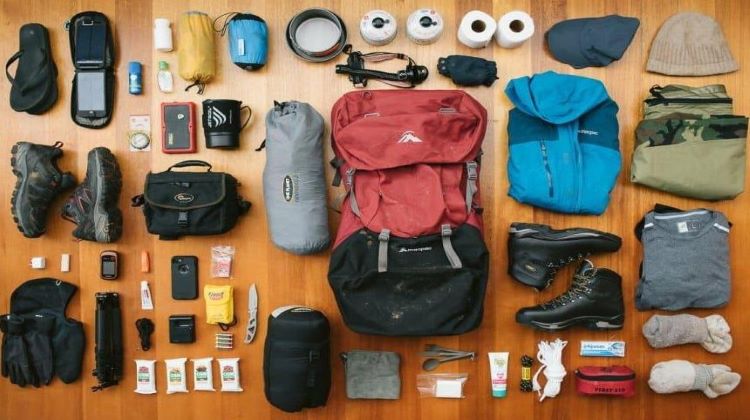
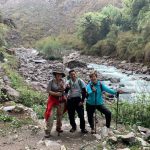 Wednesday, June 25th, 2025
Wednesday, June 25th, 2025
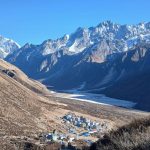 Sunday, June 22nd, 2025
Sunday, June 22nd, 2025
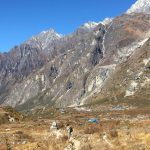 Saturday, June 14th, 2025
Saturday, June 14th, 2025
 Sunday, June 8th, 2025
Sunday, June 8th, 2025
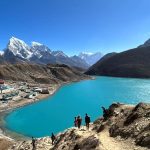 Wednesday, June 4th, 2025
Wednesday, June 4th, 2025
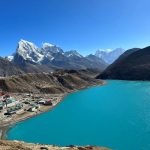 Wednesday, June 4th, 2025
Wednesday, June 4th, 2025
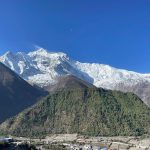 Friday, May 16th, 2025
Friday, May 16th, 2025
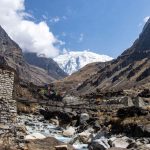 Friday, May 9th, 2025
Friday, May 9th, 2025
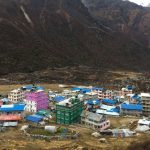 Tuesday, February 25th, 2025
Tuesday, February 25th, 2025
